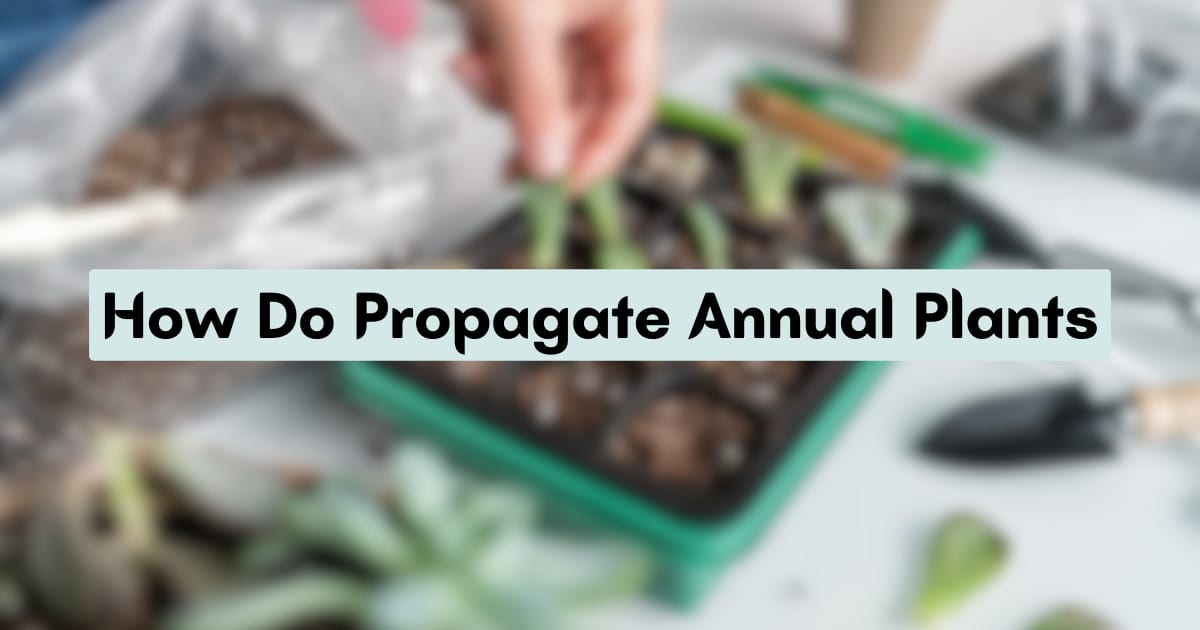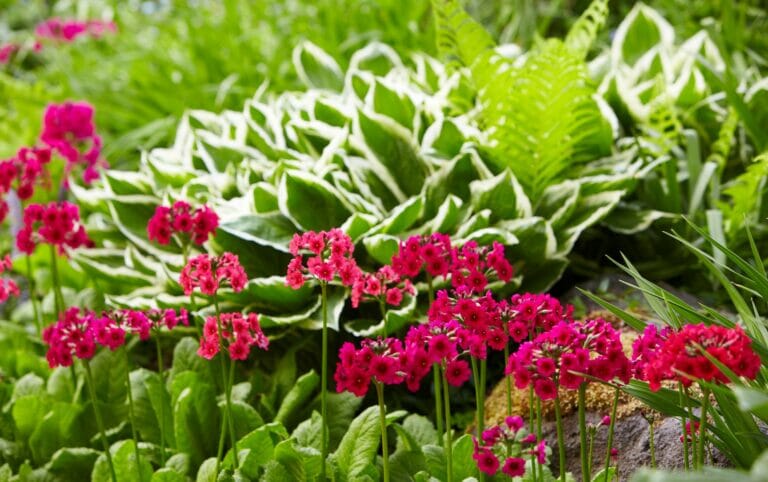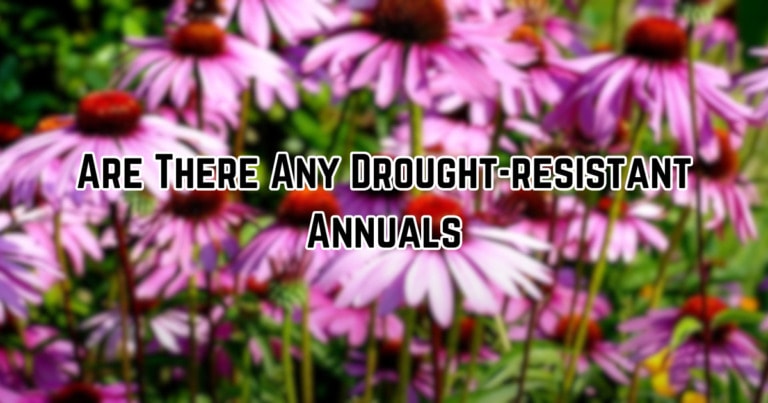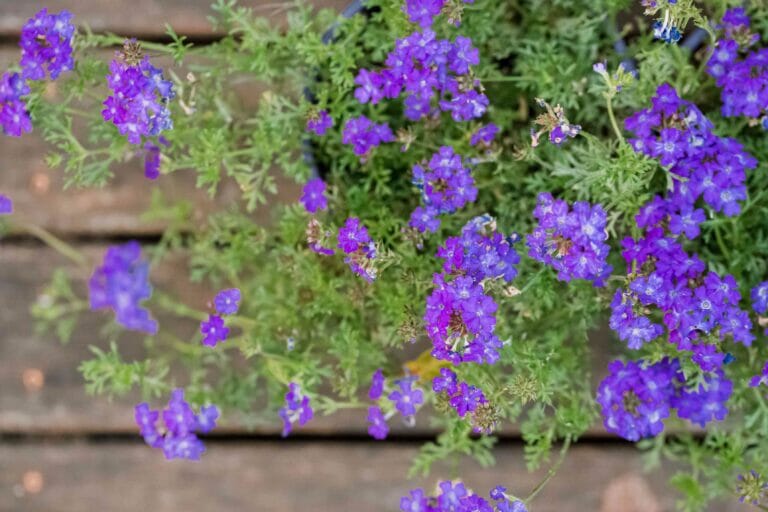
How do you propagate annual plants? If you’re curious about how to create new plants from seeds or cuttings, you’ve come to the right place! Propagating annual plants can be a fun and rewarding way to expand your garden and share your favorite blooms with friends and family.
In this article, we’ll explore different methods of propagating annual plants, from sowing seeds to taking stem cuttings. We’ll also provide step-by-step instructions and helpful tips to ensure success in your propagation adventures. So, let’s dive in and discover the secrets of multiplying your favorite annuals!
Whether you’re a gardening enthusiast or just beginning your green thumb journey, understanding how to propagate annual plants is an essential skill.
By learning these techniques, you can create a thriving garden full of beautiful, vibrant flowers that will delight you throughout the seasons. So, grab your gardening gloves and get ready to unlock the magic of plant propagation!
How to Propagate Annual Plants
There is nothing complicated, here are simple steps to do this process,
1. Choose a healthy parent plant with mature stems.
2. Cut a stem just below a node.
3. Remove lower leaves from the stem.
4. Dip the end in the rooting hormone.
5. Plant the stem in moist soil or a rooting medium.
6. Keep the cutting in a warm and humid environment.
7. Water regularly and provide indirect light.
8. After roots develop, transplant the new plant.
Propagating annual plants is an easy and rewarding process. Follow these steps to successfully propagate your favorite annuals and expand your garden!
Benefits of Propagating Annual Plants
Propagating annual plants offers several benefits for both experienced gardeners and beginners alike. Firstly, it allows gardeners to save money by not having to purchase new plants each year. It’s a cost-effective way to expand your garden and experiment with different varieties.
Propagating annual plants can help preserve rare or heirloom varieties that may be difficult to find commercially. By propagating and sharing these plants, you contribute to their conservation and ensure their genetic diversity.
Methods of Propagation
1. Seed Propagation
One of the most common and cost-effective ways to propagate annual plants is through seed propagation. The process involves harvesting seeds from mature plants and sowing them in containers or directly in the garden. To begin, identify ripe seed pods or fruits and collect the seeds.
Clean and dry them before sowing. Prepare a suitable seed starting mix and sow the seeds according to their specific requirements, such as light requirements and depth.
Keep the soil moist and provide adequate light and warmth for germination. Once the seedlings have grown, you can transplant them into larger containers or directly into the garden.
Seed propagation is ideal for plants that produce abundant seeds, such as marigolds, zinnias, and cosmos. It allows for a large number of plants to be produced at once, making it a great option for filling out large areas in your garden or sharing with friends and family.
2. Cutting Propagation
Cutting propagation involves taking stem cuttings from parent plants and encouraging them to develop roots and grow into new plants.
This method is particularly useful for plants that do not produce seeds or have difficulty germinating from seeds. To propagate through stem cuttings, choose healthy, non-flowering stems and cut them just below a node.
Remove any lower leaves and dip the cut end in a rooting hormone to encourage root development. Plant the cuttings in a well-draining rooting medium and provide the right level of moisture and warmth. Over time, the cuttings will develop roots and can be transplanted into pots or the garden.
Cutting propagation works well for plants like coleus, geraniums, and begonias. It allows you to create new plants that are identical to the parent plant, ensuring that you can reproduce your favorite varieties exactly.
3. Division Propagation
Division propagation involves separating the root mass of mature plants into smaller sections and planting them as individual plants.
This method is commonly used for perennials but can also be adapted for some annuals. To propagate through division, dig up the mature plant and carefully separate the roots into sections, ensuring each section has both roots and shoots.
Replant the sections in suitable locations, taking care to provide adequate water and nutrients. Division propagation is an excellent way to rejuvenate overgrown or crowded plants and create multiple plants from a single specimen.
Plants like hostas, daylilies, and ornamental grasses respond well to division propagation. It allows you to refresh your garden and create a more balanced and visually appealing landscape.
Tips for Successful Propagation
1. Choose healthy parent plants with no signs of disease or pests.
2. Timing is crucial. Research the specific requirements of each plant and propagate at the appropriate time of year.
3. Make sure your propagation medium, whether it’s a seed starting mix or rooting medium, is sterile to prevent disease.
4. Provide the right amount of light and warmth for successful germination and growth.
5. Water the plants carefully, ensuring they don’t dry out or become waterlogged.
6. Patience is key. Not all propagation attempts will be successful, so don’t be discouraged by failures.
How to Care for Propagated Plants
Once you’ve successfully propagated your annual plants, it’s essential to provide them with proper care for their continued growth and success. Here are a few general tips:
– Transplant the seedlings or rooted cuttings into suitable containers or garden beds with well-draining soil.
– Water the young plants regularly, keeping the soil moist but not waterlogged.
– Provide adequate sunlight or shade, depending on the plant’s requirements.
– Consider using organic fertilizers to provide the necessary nutrients.
– Monitor the plants for signs of pests or diseases and take appropriate action if needed.
– As the plants mature, pinch or prune them to encourage bushier growth and more abundant blooms.
Remember, each plant species has unique care requirements, so do some research on the specific needs of the plants you propagate to ensure their long-term health and beauty.
Additional Propagation Methods
Air Layering
Air layering is a propagation method that involves creating roots on a stem while it is still attached to the parent plant. This method is particularly useful for plants with long, flexible stems, such as Philodendrons, Ficus, and certain fruit trees.
By creating a small wound on the stem and covering it with a rooting medium and plastic wrap, roots will develop at the wound site. Once the roots have formed, the stem can be cut and potted as a new plant.
Grafting
Grafting is a more advanced propagation technique that involves joining the stem of one plant (the scion) with the root system of another plant (the rootstock).
This method is commonly used to propagate fruits trees and roses. It allows for the production of multiple varieties on a single tree, provides improved disease resistance, and can increase fruit quality and quantity.
Tissue Culture
Tissue culture is a laboratory-based propagation method that involves growing plants from small pieces of tissue, such as leaf fragments or stem cells.
This method is used to mass-produce uniform and disease-free plants and is commonly employed in commercial plant production. It requires specialized equipment and knowledge, making it less accessible to home gardeners.
Knowing how to propagate annual plants opens up a world of possibilities for gardeners. Whether you choose seed propagation, cutting propagation, or division propagation, each method offers its advantages and can be adapted to a wide range of plant species.
With a little patience and care, you’ll be able to multiply your favorite annual plants, save money, and create a vibrant garden that showcases your love for plants. Happy propagating!
Frequently Asked Questions
Welcome to our FAQ section on propagating annual plants! Here, we have compiled some common questions about how to propagate annual plants and provided detailed answers. Read on to discover the secrets of successful propagation.
1. Can I propagate annual plants from seeds?
Yes, you can absolutely propagate annual plants from seeds. Most annual plants produce seeds that you can collect and use for propagation. To do so, start by collecting mature seeds from your desired annual plants.
Clean and dry the seeds thoroughly before storing them in a cool, dry place. When it’s time to propagate, sow the seeds in a suitable growing medium, provide the right conditions for germination, and watch your new plants grow!
Keep in mind that some annual plants have specific requirements for germination. Some may need to be soaked in water or subjected to periods of cold stratification. Do a little research on the specific annual plant you want to propagate to ensure you’re providing the optimal conditions for successful seed germination.
2. What other methods can I use to propagate annual plants?
In addition to seed propagation, there are other methods you can use to propagate annual plants. One popular method is stem cutting propagation.
This involves taking a cutting from an existing plant and encouraging it to grow roots and form a new plant. To propagate through stem cuttings, select a healthy stem from the parent plant and make a clean cut just below a node.
Remove any lower leaves and dip the cut end in the rooting hormone to encourage root development. Place the cutting in a moist soil mix, provide adequate humidity, and wait for the roots to grow.
Another method you can try is division. This is especially useful for perennial plants that bloom annually. Simply dig up the parent plant, divide it into smaller sections, making sure each section has enough roots and foliage, and replant them in suitable locations. Division allows you to multiply your annual plants and rejuvenate older ones.
3. When is the best time to propagate annual plants?
The best time to propagate annual plants depends on the specific plant and the propagation method you’re using. For seed propagation, follow the instructions on the seed packet, as it will often indicate the best time to sow the seeds.
In general, it’s best to sow annual plant seeds when the weather conditions are favorable for growth, which is typically in spring or early summer when the soil is warm and the risk of frost has passed.
For stem cutting propagation, the timing will depend on the growth stage of the parent plant. The ideal time is usually during the active growing season when the plant is actively producing new stems. Avoid propagating during periods of stress, such as extreme heat or cold, as this can hinder root development and overall success.
4. How long does it take for annual plants to propagate?
The length of time it takes for annual plants to propagate can vary depending on the specific plant and the propagation method used.
With seed propagation, germination times can range from a few days to a few weeks, depending on the plant’s characteristics and the conditions provided. Some annual plants may require additional time for growth and development before reaching a suitable size for transplanting.
With stem cutting propagation, it typically takes several weeks for the cuttings to develop roots and establish themselves as new plants. The rooting process can be influenced by factors such as temperature, humidity, and the overall health of the cutting. Patience is key when propagating annual plants, as it may take some time before you see successful results.
5. How do I care for propagated annual plants?
Once you have successfully propagated your annual plants, it’s important to provide them with proper care to ensure their continued growth and health. Pay attention to their specific needs in terms of sunlight, water, and nutrients. Most annual plants thrive in well-draining soil and require regular watering, especially during dry periods.
Monitor the plants for any signs of pests or diseases and take appropriate action if needed. Pruning may be necessary to promote bushier growth and improve overall plant vigor.
If you propagate the annual plants in pots, you may need to gradually acclimate them to outdoor conditions before transplanting them to the garden. By providing the right care, your propagated annual plants will flourish and bring beauty to your garden throughout the season.
So, here’s what you need to know about propagating annual plants. First, you can do it from seeds or cuttings. If you choose seeds, make sure to sow them correctly and provide proper care. If you go with cuttings, use healthy stems and give them the right environment to root.
Second, take into account the specific needs of each type of annual plant, such as light, water, and temperature. Pay attention to these factors to ensure successful propagation. Finally, be patient. It may take some time for your plants to grow and thrive, but with proper care and patience, you’ll have beautiful annuals in no time!



